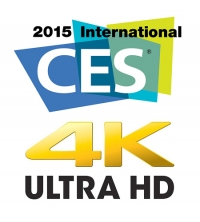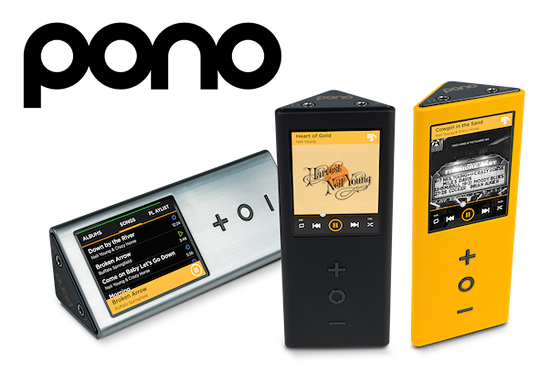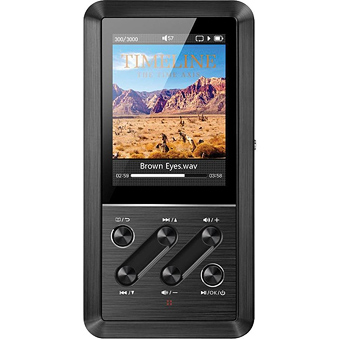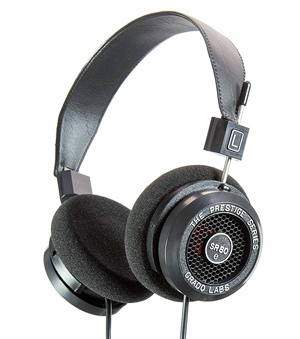Quantum Dot LED displays (QD-LED) are essentially an example of nanotechnology in action in consumer devices. Similar to organic LED (OLED), they use semiconductor nanocrystals which glow when you shine light on them. Their size can be precisely controlled, and the color they give off depends on their size, which means that they allow for much more precise and efficient color control than traditional display technologies. (Digital Trends has a nice explainer here for those of you who would like to know more.)
On the Blu-ray front at CES, the Blu-ray Disc Association (BDA) has been working diligently on 4K Blu-ray – likely to be officially known as Ultra HD Blu-ray – and it appears that the first players (and likely discs to support them) are headed to market in time for Christmas 2015.
Panasonic has just today unveiled its first Ultra HD Blu-ray player prototype at the convention, though it’s not much to look at and there are precious few details available – not even a model number that we can see. Panasonic was vague about when it will arrive in stores, but again next Christmas is a reasonable assumption. Here’s their product shot of the player…

Meanwhile, Panasonic also officially announced that it’s joining the UHD Alliance, which aims to “set the bar for next generation video entertainment by establishing new standards to support innovation in video technologies including 4K and higher resolutions, high dynamic range, wider colour range and immersive 3D audio.” Other group members include LG, Samsung, Sony, Walt Disney Studios, 20th Century Fox, Warner Bros, and Netflix. The group expects to announce a worldwide UHD rollout “roadmap” in the coming months.
The key question about Ultra HD Blu-ray still remains open: Exactly how much will the major Hollywood studios support a 4K physical media format, even as the industry rushes headlong toward digital and streaming. Personally, I suspect it will be many months yet before we have a clear answer to this question.
Moving on, lossless audio also seems to be making a comeback of sorts at CES this year, with the official U.S. public launch today of Neil Young’s Pono Music World online store. Previously, the store (accessible via Pono’s own iTunes like software available at the linked site) had only been open to those who participated in the Pono Kickstarter and who already had their Pono Players.
For those of you who’ve never heard of Pono before, it’s essentially a high-quality handheld Digital Audio Player (DAP). You can use it to drive a pair of audiophile headphones or hook it up to your component audio system. The player is designed to play lossless digital music files – FLAC, ALAC, WAV, AIFF, AAC, etc – as well as lower quality MP3 files. The player supports lossless resolutions up to 192 kHz/24-bit, which would be considered equivalent to studio master quality. The Pono Player can be purchased online now from Pono for $399 in yellow and black, so the price is about what you would have paid for a high-end iPod back in the day.
Pono is somewhat controversial, as there’s a debate raging online (over the topic of lossless audio) between those who claim that the human ear simply can’t resolve audio detail much beyond 44 kHz/16-bit (CD quality) and so Pono is therefore simply an excuse for snobs to overcharge people for music, and audiophiles who claim that you can absolutely hear the difference between CD quality and higher resolutions like 96/24 and 192/24, and so they damn well want to have the choice available to them. I fall somewhere in between… and it’s worth noting here that listening to music is a personal, individual and highly subjective experience that’s very difficult to quantify with only a purely scientific approach.
As many of you longtime readers will know, I was a big supporter of DVD-Audio and SACD back in the day, and actually had the chance to speak with Neil Young on the subject at CES several years ago. Naturally, after much hype, the record companies never really got behind either DVD-Audio and SACD, and Young’s frustration over this is a big part of why he finally launched Pono. From my own personal experience with lossless audio, I’ve found that I can absolutely hear and appreciate the difference between MP3 and CD quality 44/16, and generally between 44/16 and higher resolution 96/24, but that beyond 96/24 the differences become very subtle. And of course, the sound quality you experience is arguably more dependent upon the quality of your equipment and your listening environment than any other factor. But what I think matters far less than the actual resolution of a recording is the quality of the mastering on that recording – and to the extent that Young’s Pono Music service encourages more engineers to master music to a higher audiophile standard rather than for typically compressed and loudness-boosted radio and earbud listening, all music fans should benefit from the improvement in quality whether they’re a Pono believer or not. A well-mastered album presented at 44/16 is almost always going to sound better than a poorly-mastered album at 192/24. And almost any music is going to sound better through better quality speakers and headphones.
I’ll actually write more on this subject in the future, but what I would say in the meantime – to those of you who might be considering diving into lossless audio now – is this: You don’t have to spend a lot of money to dramatically increase the quality of your music listening experience. First of all, if you’re already a Blu-ray and home theater consumer, you probably have almost everything you need to enjoy lossless audio right now. Many home theater A/V receivers and speaker systems can deliver fantastic sound quality for music, and many models of Blu-ray player now play not only SACD and DVD-Audio discs, but a wide range of lossless digital audio file formats via USB. Speaking again from my own experience, I’m someone who enjoyed listening to music on my iPod for many years. I would tend to rip CDs in 320 kbps MP3 format to get the best quality possible out of the iPod. A few years ago I ditched my cheap earbuds for a set of $100 Grado SR-80 headphones (Amazon link here) – which are not only affordable but very highly regarded by audiophiles – and the quality of the sound I heard in my existing MP3 files improved dramatically. With Apple having announced that they’re abandoning the classic iPod, I started looking for a replacement and so I’ve recently been testing the Fiio X3 Digital Audio Player, which not only plays MP3 but all of the lossless audio file formats as well up to 192/24. Matched with my Grado headphones, I’m now enjoying pure audiophile quality in a portable experience. And the Fiio X3 only costs $170 on Amazon (link here) – less than half of what I paid for my iPod several years ago. For those of you who might be curious, here’s a couple of product shots…
The point of all this is that while you can certainly spend thousands of dollars to chase the dream audiophile experience, you don’t have to. The same rule applies to audio and music that applies to video, Blu-ray and home theater: The Law of Diminishing Returns. What it means is this: You can spend a modest amount for money for a massive increase in quality. But beyond that, you start spending ever more massive amounts of money for ever more modest quality gains. What you have to decide is how much quality improvement is important to you, and how much you’re willing to spend to get it. If you’re like me, it probably doesn’t have to be more than a few hundred dollars. And once you’ve taken that first step in making a modest upgrade in your listening equipment (receiver, speakers, DAP, headphones, what have you), your existing music is going to sound dramatically better already – whether you ever choose to buy into the truly lossless audio formats or not. So that’s the place to start.
All right, that’s all for now. I’ll be back tomorrow with more news from CES 2015, as well as a round-up of new Blu-ray and DVD release news. And we’ll have more new Blu-ray reviews over the next few days as well.
Stay tuned!
- Bill Hunt





